
The Complete Light Bulb and Lamp Buying Guide
Whether you're looking to purchase LED light bulbs, CFL bulbs, HID bulbs, Halogen bulbs, or Incandescent bulbs, there is a wide variety of light
bulb types, shapes, and colors; it can be a challenge to know which lightbulb is best for you.
We will cover energy efficiency options, light bulb colors, light bulb types, light bulb lifespans, light bulb shapes, and light bulb bases. Using this guide,
let Elliott Electric Supply transform your indoor and outdoor spaces into something unique!
Energy Efficiency Options for Watts and Lumens by Bulb or Lamp Type
Light bulbs are measured in brightness (Lumens) and electrical consumption (Watts). Lumens measure the total amount of light emitted by a single bulb, whereas watts measure the amount of power a
bulb consumes. The higher the lumen rating, the more light a lamp will emit. In addition, lamps with a higher wattage rating will consume more energy, resulting in higher operation costs.
When shopping, if you're looking for a bulb that produces the same amount of brightness you currently have, make sure to choose a light with the same amount of lumens; then, remember to check
the wattage to compare how much energy it consumes. Wattage and lumens should be printed on the bulb packaging box.
Approximate Watts and Lumens Comparison
| Bulb Type |
Lumens |
| 200 - 300 |
300 - 500 |
500 - 700 |
700 - 1000 |
1250 - 2000 |
| LED |
2 - 4 watts |
3 - 5 watts |
5 - 7 watts |
8 - 10 watts |
13 - 20 watts |
| CFL |
5 - 6 watts |
8 watts |
11 watts |
15 watts |
20 - 33 watts |
| Halogen |
18 - 25 watts |
35 watts |
50 watts |
65 watts |
125 watts |
| Incandescent |
25 - 30 watts |
40 watts |
60 watts |
75 watts |
150 - 250 watts |
| Lumens |
Types of Bulb or Lamp |
| Incandescent |
Halogen |
| 200 - 300 |
25 - 30 watts |
18 - 25 watts |
| 300 - 500 |
40 watts |
35 watts |
| 500 - 700 |
60 watts |
50 watts |
| 700 - 1000 |
75 watts |
65 watts |
| 1250 - 2000 |
150 - 250 watts |
125 watts |
| Lumens |
Types of Bulb or Lamp |
Compact Fluorescent
Lamp (CFL) |
LED |
| 200 - 300 |
5 - 6 watts |
2 - 4 watts |
| 300 - 500 |
8 watts |
3 - 5 watts |
| 500 - 700 |
11 watts |
5 - 7 watts |
| 700 - 1000 |
15 watts |
8 - 10 watts |
| 1250 - 2000 |
20 - 33 watts |
13 - 20 watts |
What is Luminous Efficacy?
Luminous efficacy is a measure of how well a lamp produces visible light. In the International System of Units (SI), this is measured in lumens per watt. Lighting efficiency is the
ratio between luminous flux (the measure of perceived power of light) and the amount of input power (electrical). An easy guide for determining the luminous efficacy of different
bulb types can be viewed below.
| Light Source |
Luminous Efficacy |
| LED |
75 - 110 (lm/W) |
| CFL |
50 - 70 (lm/W) |
| High Pressure Sodium |
100 (lm/W) |
| Metal Halide |
75 - 100 (lm/W) |
| Mercury Vapor |
35 - 55 (lm/W) |
| Halogen |
10 - 20 (lm/W) |
| Incandescent |
12 - 18 (lm/W) |
What are Foot Candles?
A foot-candle, sometimes foot candle, describes the illumination of one bulb on a one-square foot surface with a uniformed distribution of light. A foot-candle is described as one lumen per
square foot. This is considered a customary unit for the United States only, typically used by architects to calculate appropriate lighting levels.
Additional Footcandle Reference Guides:
Light Bulb Colors
Which is brighter, cool white or daylight? What is cool white versus warm light? There are many questions when concerning lightbulb colors, and Elliott Electric is here to help!
Light bulbs will produce different colors at different temperatures much like a novelty mood ring. Select different bulb colors depending on your desired outcome. Color temperature
is a way to describe a light's appearance. This is different from color rendering, which describes how a light source makes the color of an object appear to the eyes.
Some LED fixtures come with a programmable wireless controller that can visually impact the ambiance of a space. The color spectrum is measured on the Kelvin scale from very dark red (1000K) to
the brightest ″white″ (10000K):
- 2000K - 3000K for warm white and th yellow glow of flames
- 3000K - 4500k for late parts of the day, such as a ″twilight″ glow
- 4600K and up for direct sunlight, overcast skies, and blue sky
Daylight
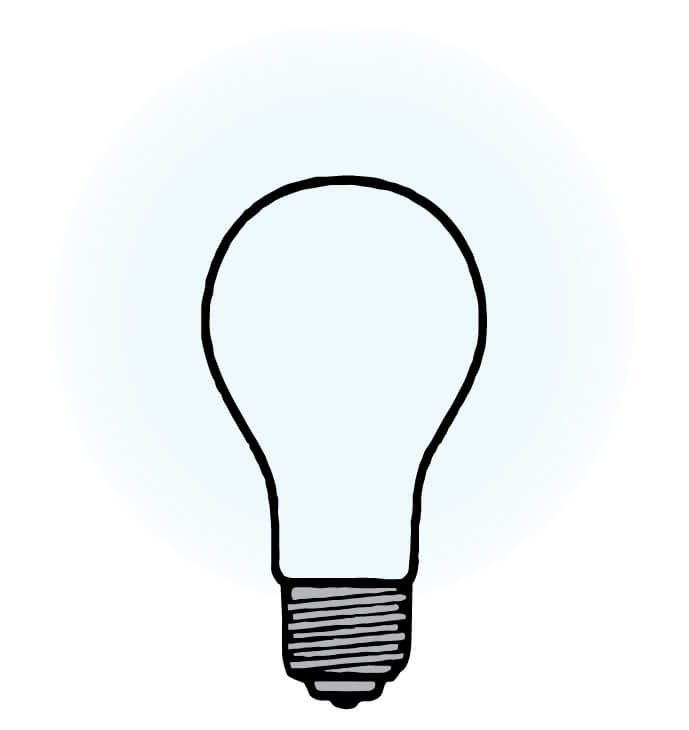
Temperature:
6500K
Descriptor:
Sunlight, bright
Uses:
Best for bright-task lighting, such as film locations. Ideal for agricultural settings, such as indoor farming. Also good for outdoor flood
lights or outdoor spotlights.
Shop 6500K Bulbs or Lamps
Bright White
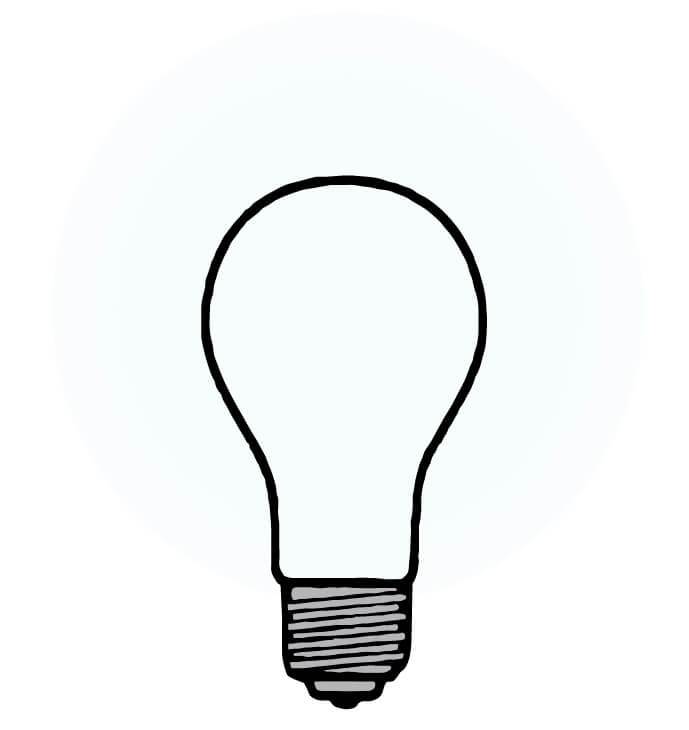
Temperature:
5000K
Descriptor:
Precise, vibrant, clean
Uses:
Best used where adequate lighting is required, such as a warehouse, sports stadium, and healthcare facilities.
Shop 5000K Bulbs or Lamps
Cool White
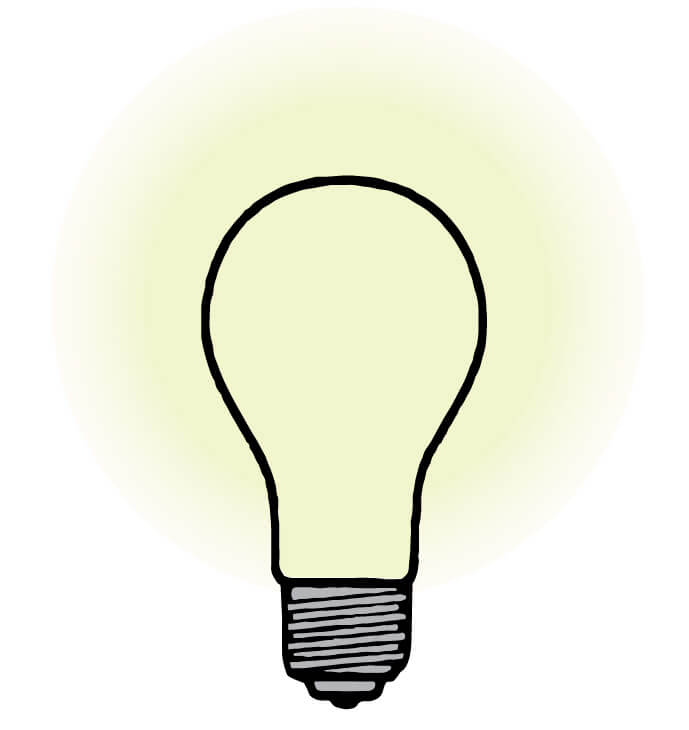
Temperature:
4100K
Descriptor:
Alert, energetic
Uses:
Best for kitchens, offices, work spaces, bathrooms, and makeup vanities. This temperature makes colors on labels pop, such as in grocery stores.
Shop 4100K Bulbs or Lamps
Neutral White
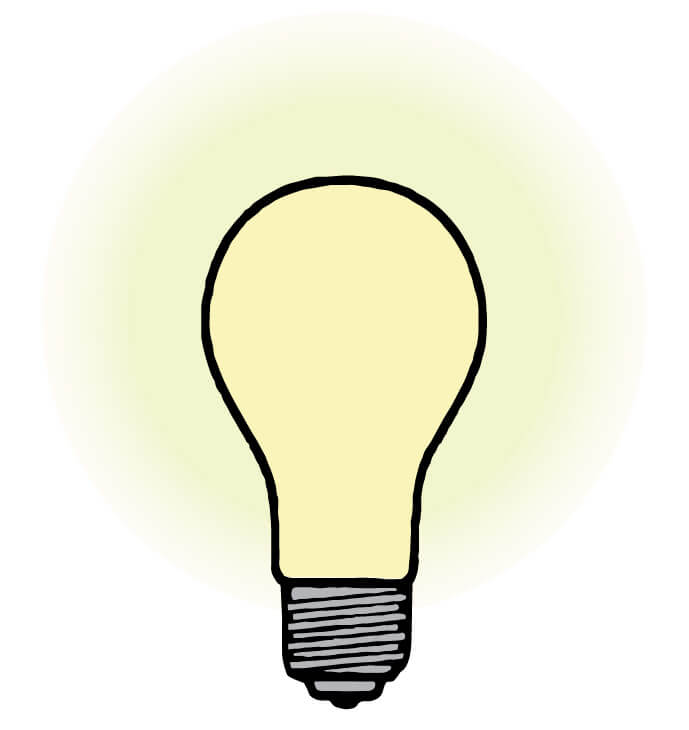
Temperature:
3500K
Descriptor:
Vibrant, crisp, balanced
Uses:
Best for open living spaces, kitchens, offices, work spaces, retail stores, and makeup vanities.
Shop 3500K Bulbs or Lamps
Soft White
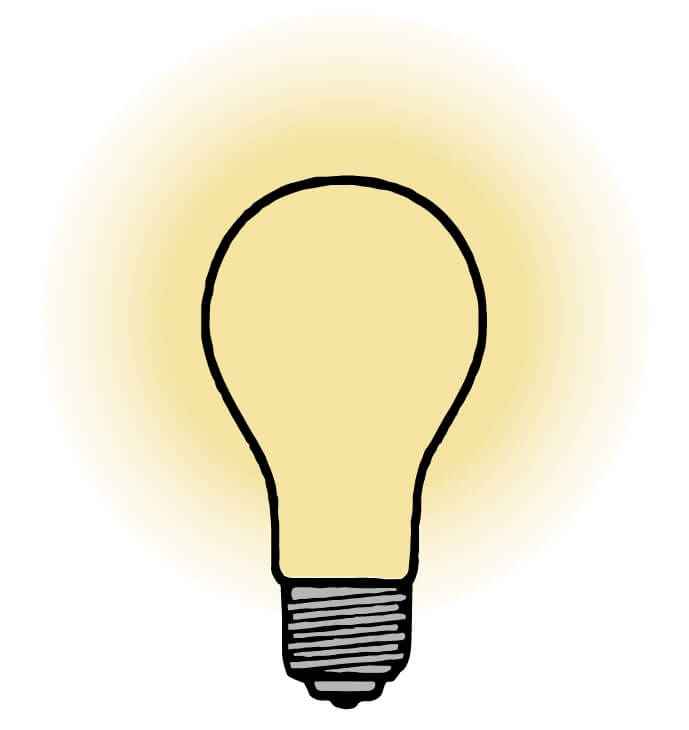
Temperature:
3000K
Descriptor:
Friendly, inviting, calm
Uses:
Best for relaxing locations like spas, bedrooms, living rooms, and even restaurants with an ambient setting. Low-light with a warm glow.
Shop 3000K Bulbs or Lamps
Warm White
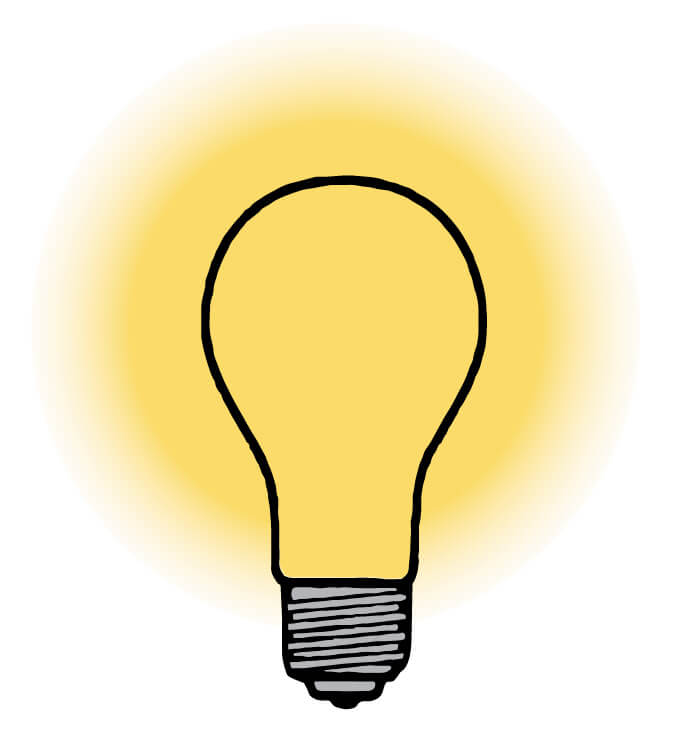
Temperature:
2700K
Descriptor:
Intimate, cozy, personal
Uses:
Best for relaxing locations like spas, bedrooms, living rooms, and even restaurants with an ambient setting. Low-light with a warm glow.
Shop 2700K Bulbs or Lamps
Shop all Bulbs & Lamps
Types of Light Bulbs
The five types of light bulbs commonly found in a household are: LED, Fluorescent, HID, Halogen, and Incandescent.
LED Bulb
LED (light-emitting diode) lights are quickly becoming the most commonly used light bulb. Environmentally-friendly and energy efficient, LEDs produce illumination via a
solid-state lighting device.
LED bulbs are semiconductor devices that use 75% less energy when compared to traditional lighting and are available in multiple shapes, shades, and
controllability; they come in the colors amber, green, blue, and red, to name a few. LEDs feature exceptional efficiency, lifespan, and versatility.
Standard LED Bulb
Standard LED bulbs are used to replace incandescent bulbs or compact fluorescent lighting (CFL). LED standard bulbs are the most commonly-used
shape (A-shape) and are found in many indoor and outdoor lighting fixtures; they also use the common Edison screw cap base (E). Due to the LEDs long-lasting lifespan,
they are the perfect option for indoor fixtures so you have more time to work beneath the bulb as opposed to changing it.
Shop LED Bulbs or Lamps
LED Can Light Bulb
LED can lights are used in recessed lighting. The bulb or lamp is inserted into a can-shaped socket in a ceiling light fixture. These LED bulbs are
flush to a surface for a polished look, meaning electrical components are hidden from view. LED Can Lights work well in residential, commercial, and retail locations.
An LED can light uses a light bulb base appropriate for its fixture; this includes an Edison screw cap base (E), a single pin type base (F), or a bi pin or multi pin base (G).
Shop LED Can Light Bulbs or Lamps
LED Flood Light Bulb
LED floodlights illuminate areas with a wide beam of light. LED flood lights are used in large, outdoor areas like stadiums, warehouses, and household lawns.
Using an LED bulb for a floodlight saves money, whether the light remains on during all hours or is motion-sensor activated. They also offer ease-of-use, as they are
low-maintenance and have a long-lasting lifespan. An LED flood light uses the common base type Edison screw cap (E).
Shop LED Flood Light Bulbs or Lamps
LED Track Light Bulb
LED track lights run along a ceiling on a track or rail. Track lighting fixtures can be placed in any location on a ceiling with customizability for where the illumination
points. Using LED bulbs, usually A-shaped, will ensure longevity of lifespan and unique color/warmth for your track lights. Often, the light bulb base used in track lighting
is the Edison screw base (E), but as each track light is unique, many base types may be used.
Shop LED Track Light Bulbs or Lamps
Decorator LED Light
LED decorative light illumination emulates the ornate glow of incandescent bulbs, but uses less energy and last longer. These decorative LED bulbs
are often placed inside unique lighting fixtures with the purpose of providing illumination and distinctive decoration in a home or business. Common shapes include
the LED candelabra (with an Edison screw base) and LED strip lights (with adhesive backing).
Shop Decorator LED Lights
Fluorescent Bulb
Fluorescent bulbs deliver concentrated, bright light for laundry and utility rooms, as well as commercial and industrial spaces. Available in black and colored lights for
personalized spatial design, these bulbs can last up to 20K hours.
Fluorescent Tube
Fluorescent light bulbs were originally developed in a long, straight tube shape as an energy-saving alternative to the incandescent bulb. These tube-shaped fluorescent
bulbs are often used in kitchens and offices with recessed lighting fixtures. Tube lights offer even, high distribution of illumination and can come in various colors, like white,
red, and blue. Fluorescent tubes can come as a singular-tube, twin-tube, or triple-tube, and as such use a single pin type base (F) or bi pi/multi pin base (G).
Shop Fluorescent Bulbs or Lamps
Compact Fluorescent (CFL) - Spiral or Spring
A spiral tube-shaped (CFL) bulb is also an energy-saving alternative to an incandescent light bulb. The spiral-shaped CFL bulbs were developed after the fluorescent
tubes as an alternative to the incandescent bulb for lamps and other light fixtures. Spiral-shaped CFL bulbs are more budget-friendly than LED bulbs and deliver
energy-efficient, ″softer″ light that
appears warm and yellow. Spiral CFL bulbs can have either an Edison screw base or a pin base.
Shop CFL Spiral Bulbs or Lamps
Compact Fluorescent (CFL) - Straight Tube
A straight tube-shaped compact fluorescent (CFL) bulb typically has a two or four pin base (G). The straight tube-shaped CFL bulb, also referred to as a fluorescent
bent lamp, was developed for use in commercial spaces, grocery stores, healthcare facilities, warehouses, and more. These bulbs are bent in a U-shape placed within a
2x2 troffer light. Their bright beam clearly illuminates a space.
Shop CFL Tube Bulbs or Lamps
HID - High Intensity Discharge Bulb
A high intensity discharge (HID) bulb delivers bright illumination for long-distances due to emitting more visible light than infrared. HID bulbs
produce more visible light per
unit of power consumed than others. Due to their brightness, HID bulbs are commonly used as headlights for modern vehicles, although they work well in stadiums, parking garages,
and as street lights.
High Pressure Sodium Bulb
High pressure sodium (HPS) lamps are used for outdoor lighting like street lights or parking lot lights, as well as indoor settings like warehouses and shipping areas.
Many indoor gardens also use HID sodium lights due to cost efficiency. The illumination of a high pressure sodium light begins as a pinkish glow and, once warmed, will turn
pinkish orange, but it can also be used where color rendering is not needed. High pressure sodium bulbs come in a variety of shapes dependent on their use; they may be large
(such as for a street lamp) or they may be more common shapes like the ellipsoidal (ED23.5).
Shop High Pressure Sodium Bulbs or Lamps
Metal Halide Bulb
Metal halide lights are used as overhead lighting for commercial, industrial, and public spaces due to their bright illumination, which appears as a white,
natural light. Additionally, metal halide bulbs are used in car headlights to ensure proper lighting of dark streets and for indoor gardening due to their high-intensity beam.
Some metal halide bulbs have an Edison screw (E) base while others are double-ended with a slide base (S) or wedge base (W). Some of these bulbs will also require ballasts.
Shop Metal Halide Bulbs or Lamps
Mercury Vapor Bulb
Mercury vapor lighting is closely related to the metal halide; both are a type of high-intensity discharge (HID) gas lamp. HID mercury vapor lights are used in street
lighting and general area lighting. Their color possibilities range from ultraviolet, violet, blue, green, and yellow-orange. High intensity mercury vapor lightbulbs
come in many shapes, such as type E (ED23.5), type A (A19), and type PAR (PAR38); their most common base type is the Edison screw cap (E), but some figures may require a
single pin base or bi pin base.
Shop Mercury Vapor Bulbs or Lamps
Halogen Bulb
A form of incandescent, halogen lights are a gas bulb that burn longer and brighter, as well as increase efficiency by 30%.
Halogen bulbs are energy saving light bulbs used for indoor/outdoor spaces using halogen gas to increase light output
and life ratings. These items feature heavy glass and will usually last about a year. Essentially, halogen bulbs are
considered an enhanced version of the incandescent bulb.
Halogen bulbs (and incandescent bulbs) are being phased out due to environmental concerns. This does not ban the
purchase and use of these bulbs and effects only common household incandescent bulbs that are not energy-efficient.
For more information, view information on the
Energy Independence and Security Act of 2007
.
Shop Halogen Bulbs or Lamps
Incandescent Bulb
Incandescent bulbs are mostly used in specialty products like Edison filament bulbs.
Formerly the most common type of lightbulb used in the twentieth century, the incandescent light bulb produces light by heating a filament wire with electricity until it glows
inside of a glass bulb. Their iconic shapes can lead to opportunities for up cycle and craft projects, but due to energy and environmental concerns, this item will be
federally-prohibited for sale past February 2023.
Shop Incandescent Bulbs or Lamps
Shop all Bulbs & Lamps
How long do LED, fluorescent, hid, halogen, and incandescent light bulbs last?
When choosing a bulb type, it's worth considering how often you'll be required to change it. Difficult to reach light fixtures should use a bulb with a longer lifespan, so you won't
be troubled each time the lamp burns out. LED bulbs average 20 year lifespans and can last 100K hours. Areas with hazardous conditions may require a sealed PAR lamp or CFL bulb, but these have
significantly shorter lifespans. Numerous factors can affect performance, but below is a basic comparison between the different types.
Elements such as heat, humidity, precipitation, chemical exposure, and mechanical failure may all affect how long each lightbulb lasts. Some types experience catastrophic failure and immediately
do not produce light; however, an LED bulb with a failing capacitor will gradually produce less lumens. The Lumen rating system on packaging explains this scenario: if a bulb is L60-rated with a
lifespan of 25K hours, this indicates the lamp will only produce 60% of its original lumen output after 25,000 hours of use.
Light bulbs are measured in brightness (Lumens) and electrical consumption (Watts). Lumens measure the total amount of light emitted by a single bulb, whereas watts measure the amount of
power a bulb consumes. The higher the lumen rating, the more light a lamp will emit. In addition, lamps with a higher wattage rating will consume more energy, resulting in higher operation costs.
Light Bulb Lifetime Cost Comparison by Light Bulb Type
For about $7, you can buy your 60W, standard A19, regular incandescent bulb (if you can find one) and it will last up to two years. Each year, you'll use it an average 1,000 hrs at a rate of $0.18/hr, yielding
an annual cost of $14.30. Over 10 years, continued use of this bulb type will cost you almost $143. By comparison, the same output in an LED bulb, you would need only one bulb
with a total cost including power of about $20. Similarly, CFL bulbs would need 1 bulb and cost ~$28 over the same period.
Cost Comparison between LEDs, CFLs, Halogen, and Incandescent Light Bulbs
|
LED |
CFL |
Halogen |
Incandescent |
| Light Bulb Projected Lifespan |
25,000 hours |
10,000 hours |
1,000 hours |
2,000 hours |
| Watts per Bulb (equiv. 60 watts) |
9.8 |
14 |
53 |
60 |
| Approximate Cost per Bulb |
$4 |
$3 |
$3 |
$7 |
| kWh of Electricity Used Over 25,000 hours |
245 |
350 |
1,325 |
1,500 |
| Cost of Electricity (@ 0.18 per kWh) |
$44.10 |
$63 |
$239 |
$270 |
| Bulbs Needed for 25,000 hours of Use |
1 |
2.5 |
25 |
12.5 |
| Equivalent 25,000 hours Bulb Expense |
$4 |
$7.50 |
$75 |
$87.50 |
| Total Cost for 25,000 hours |
$48.10 |
$70.50 |
$314 |
$357.50 |
| Light Bulb Projected Lifespan |
| LED |
25,000 hours |
| CFL |
10,000 hours |
| Halogen |
1,000 hours |
| Incandescent |
2,000 hours |
| Watts per Bulb (equiv. 60 watts) |
| LED |
9.8 |
| CFL |
14.0 |
| Halogen |
53.0 |
| Incandescent |
60.0 |
| Cost per Bulb |
| LED |
$4.00 |
| CFL |
$3.00 |
| Halogen |
$3.00 |
| Incandescent |
$7 |
| kWh of Electricity Used Over 25,000 hours |
| LED |
245 |
| CFL |
350 |
| Halogen |
1,325 |
| Incandescent |
1,500 |
| Cost of Electricity (@ 0.18 per kWh) |
| LED |
$44.10 |
| CFL |
$63.00 |
| Halogen |
$239.00 |
| Incandescent |
$270.00 |
| Bulbs Needed for 25,000 hours of Use |
| LED |
1.0 |
| CFL |
2.5 |
| Halogen |
25 |
| Incandescent |
12.5 |
| Equivalent 25,000 hours Bulb Expense |
| LED |
$4 |
| CFL |
$7.50 |
| Halogen |
$75 |
| Incandescent |
$87.50 |
| Total Cost for 25,000 hours |
| LED |
$48.10 |
| CFL |
$70.50 |
| Halogen |
$314 |
| Incandescent |
$357.50 |
Cost Comparison between High Pressure Sodium HPS, Metal Halide, and LED HID Replacement Light Bulbs
|
HID Replacement LED |
High Pressure Sodium |
Metal Halide |
| Light Bulb Projected Lifespan |
50,000 hours |
24,000 hours |
6,000 hours |
| Watts per Bulb (equiv. 15,800-20,000 Lumens) |
115 |
150 |
250 |
| Approximate Cost per Bulb |
$169.35 |
$51.55 |
$28.57 |
| kWh of Electricity Used Over 50,000 hours |
5,750 |
7,500 |
12,500 |
| Cost of Electricity (@ 0.18 per kWh) |
$1,035 |
$1,350 |
$2,250 |
| Bulbs Needed for 50,000 hours of Use |
1 |
2.08 |
8.3 |
| Equivalent 50,000 hours Bulb Expense |
$169.35 |
$107.22 |
$237.13 |
| Total Cost for 50,000 hours |
$1,204.35 |
$1,457.22 |
$2,487.13 |
| Light Bulb Projected Lifespan |
| LED HID Replacement |
50,000 hours |
| High Pressure Sodium |
24,000 hours |
| Metal Halide |
6,000 hours |
| Watts per Bulb (equiv. 15,800-20,000 Lumens) |
| LED HID Replacement |
115 |
| High Pressure Sodium |
150 |
| Metal Halide |
250 |
| Cost per Bulb |
| LED HID Replacement |
$169.35 |
| High Pressure Sodium |
$51.55 |
| Metal Halide |
$28.57 |
| kWh of Electricity Used Over 50,000 hours |
| LED HID Replacement |
5,750 |
| High Pressure Sodium |
7,500 |
| Metal Halide |
12,500 |
| Cost of Electricity (@ 0.18 per kWh) |
| LED HID Replacement |
$1,035 |
| High Pressure Sodium |
$1,350 |
| Metal Halide |
$2,250 |
| Bulbs Needed for 50,000 hours of Use |
| LED HID Replacement |
1.0 |
| High Pressure Sodium |
2.08 |
| Metal Halide |
8.3 |
| Equivalent 50,000 hours Bulb Expense |
| LED HID Replacement |
$169.35 |
| High Pressure Sodium |
$107.22 |
| Metal Halide |
$237.13 |
| Total Cost for 50,000 hours |
| LED HID Replacement |
$1,204.35 |
| High Pressure Sodium |
$1,457.22 |
| Metal Halide |
$2,487.13 |
Cost Comparison between an HID Mercury Vapor Light Bulb and a LED HID Replacement Bulb
|
LED HID Replacement |
Mercury Vapor |
| Light Bulb Projected Lifespan |
50,000 hours |
20,000 hours |
| Watts per Bulb (equiv. 7,000-7,500 Lumens) |
50 |
175 |
| Approximate Cost per Bulb |
$81.20 |
$18.36 |
| kWh of Electricity Used Over 50,000 hours |
2,500 |
8,750 |
| Cost of Electricity (@ 0.18 per kWh) |
$450 |
$1,575 |
| Bulbs Needed for 50,000 Hours of Use |
1 |
2.5 |
| Equivalent 50,000 hours Bulb Expense |
$81.20 |
$45.90 |
| Total Cost for 50,000 hours |
$531.20 |
$1,620.90 |
| Light Bulb Projected Lifespan |
| LED HID Replacement |
50,000 hours |
| Mercury Vapor |
20,000 hours |
| Watts per Bulb (equiv. 7,000-7,500 Lumens) |
| LED HID Replacement |
50 |
| Mercury Vapor |
175 |
| Cost per Bulb |
| LED HID Replacement |
$81.20 |
| Mercury Vapor |
$18.36 |
| kWh of Electricity Used Over 50,000 hours |
| LED HID Replacement |
2,500 |
| Mercury Vapor |
8,750 |
| Cost of Electricity (@ 0.18 per kWh) |
| LED HID Replacement |
$450 |
| Mercury Vapor |
$1,575 |
| Bulbs Needed for 50,000 hours of Use |
| LED HID Replacement |
1.0 |
| Mercury Vapor |
2.5 |
| Equivalent 50,000 hours Bulb Expense |
| LED HID Replacement |
$81.20 |
| Mercury Vapor |
$45.90 |
| Estimated Total Cost for 50,000 hours |
| LED HID Replacement |
$531.20 |
| Mercury Vapor |
$1,620.90 |
Shop all Bulbs & Lamps
Light Bulb Shapes
Light bulbs come in many shapes for various purposes, ranging from decorative bulbs to industrial‑sized bulbs. The shape code begins with a
letter which designate the shape. The number in the shape code indicates the diameter of the bulb in 1/8″ units. For example, an A19 bulb would have
diameter of 19 x 1/8 of an inch, or 2.375 inches.
Common Light Bulb Shapes
| Shape |
Name |
Description |
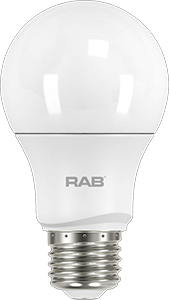 |
A19 bulb |
Type A for Arbitrary light bulbs are typically used for household lighting and known as the most common bulb shape. These work well in hall lighting,
ceiling fans, table lamps, and more.
Shop A19 Bulbs or Lamps
|
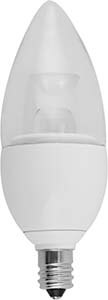 |
B11 and BA11 bulb |
Type B and Type C for Candle bulbs resemble the shape of a candle flame; they may be referred to as a ″candle bulb″ or candelabra bulb. These are often
found in chandeliers, wall sconces, and accent or pendant lights.
Shop B11 Bulbs or Lamps
Shop BA11 Bulbs or Lamps
|
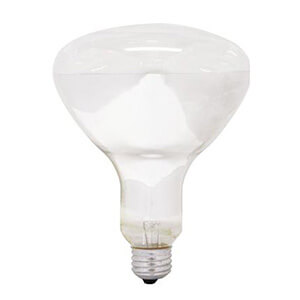 |
BR40 bulb |
Type BR for Bulged Reflector bulbs have an inner bulged reflector that greatly increases the amount of light they produce. BR
bulbs are used as flood lights and
in areas with high ceilings that have track lighting fixtures or recessed light fixtures.
Shop BR40 Bulbs or Lamps
|
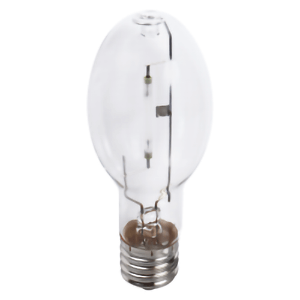 |
ED23.5 bulb |
Type E and ED for Ellipsoidal light bulbs are used for high pressure sodium lights (HPS). They are often used for streetlights
and in parking lots.
Shop ED23.5 Bulbs or Lamps
|
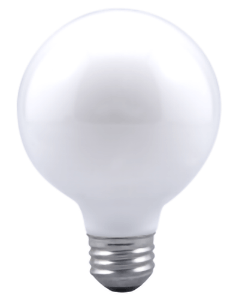 |
G25 bulb |
Type G for Globe light bulbs are globe lights, shaped like a globe. These are used for aesthetic purposes due to this unique shape. Elliott Electric offers white and clear
globe lights with a soft, white color.
Shop G25 Bulbs or Lamps
|
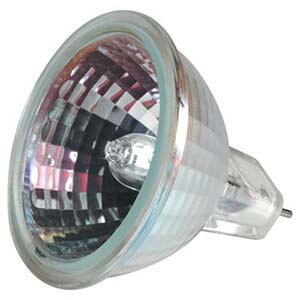 |
MR16 bulb |
Type MR for Multi-Faceted Reflector light bulbs emit concentrated beams of light. These are commonly used in track, recessed, desk, and display lights. While
outdoor use is possible, indoor remains the most common.
Shop MR16 Bulbs or Lamps
|
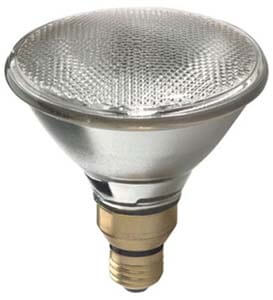 |
PAR38 bulb |
Type PAR for Parabolic Aluminized Reflector bulbs are used for outdoor lighting due to their intense, focused beam of light. Bowl-shaped
with a flat lens, these are typically a higher wattage and provide more light than the previous shapes. Common uses are in outdoor spot lights and safety lights.
Shop PAR38 Bulbs or Lamps
|
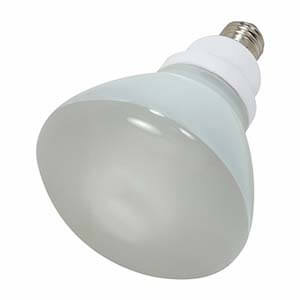 |
R40 bulb |
Type R for Reflector bulbs have a reflector focusing the direction of the light. An R shape bulb is often used in recessed
light fixtures or can lights.
Shop R40 Bulbs or Lamps
|
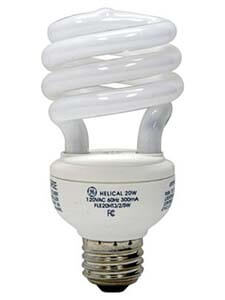 |
Spring bulb |
Type Spring bulbs are a compact spiral tube light bulb. These spring shape bulbs are often used in lamps.
Shop Spring Bulbs or Lamps
|
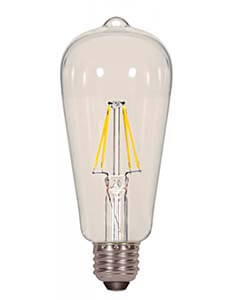 |
ST19 bulb |
Type ST for Straight Tubular bulbs are a long tube bulb with a wider and rounded tip. Best for open pendant lights and ceiling fixtures.
Shop ST19 Bulbs or Lamps
|
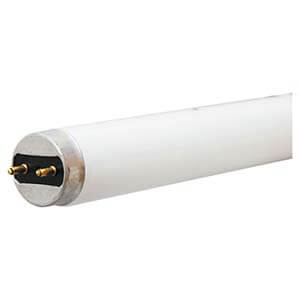 |
T8 bulb |
Type LFL and Type T for Tubular light bulbs are used in specialty lighting and lighting for large spaces. T8 or T12 can commonly be found in laundry rooms or
garages. Compact T4 bulbs can commonly be found in kitchens, offices, or in lighted signs. Shaped like a long cylinder, LFL and T bulbs are typically fluorescent or halogen and use little
energy with a crisp, white glow similar to the Kelvin scale's ″cool white.″
Shop T8 Bulbs or Lamps
|
| A19 bulb |
 |
Type A for Arbitrary light bulbs are typically used for household lighting and known as the most common bulb shape. These work well in hall lighting,
ceiling fans, table lamps, and more.
Shop A19 Bulbs or Lamps
|
| B11 and BA11 bulb |
 |
Type B and Type C for Candle bulbs resemble the shape of a candle flame; they may be referred to as a ″candle bulb″ or candelabra bulb. These are
often found in chandeliers, wall sconces, and accent or pendant lights.
Shop B11 Bulbs or Lamps
Shop BA11 Bulbs or Lamps
|
| BR40 bulb |
 |
Type BR for Bulged Reflector bulbs have an inner bulged reflector that greatly increases the amount of light they produce. BR bulbs are used as
flood lights and in areas with high ceilings that have track lighting fixtures or recessed light fixtures.
Shop BR40 Bulbs or Lamps
|
| ED23.5 bulb |
 |
Type E and ED for Ellipsoidal light bulbs are used for high pressure sodium lights (HPS). They are often used for street
lights and in parking lots.
Shop ED23.5 Bulbs or Lamps
|
| G25 bulb |
 |
Type G light bulbs are globe lights, shaped like a globe. These are used for aesthetic purposes due to this unique shape. Elliott Electric offers white and
clear globe lights with a soft, white color.
Shop G25 Bulbs or Lamps
|
| MR16 |
 |
Type MR for Multi-Faceted Reflectorlight bulbs emit concentrated beams of light. These are commonly used in track, recessed, desk, and display lights.
While outdoor use is possible, indoor remains the most common.
Shop MR16 Bulbs or Lamps
|
| PAR38 bulb |
 |
Type PAR for Parabolic Aluminized Reflector bulbs are used for outdoor lighting due to their intense, focused beam of light. Bowl-shaped with a flat lens,
these are typically a higher wattage and provide more light than the previous shapes. Common uses are in outdoor spot lights and safety lights.
Shop PAR38 Bulbs or Lamps
|
| R40 bulb |
 |
Type R for Reflector bulbs have a reflector focusing the direction of the light. An R shape bulb is often used in recessed light fixtures or can lights.
Shop R40 Bulbs or Lamps
|
| Spring bulb |
 |
Type Spring bulbs are a compact spiral tube light bulb. These spring shape bulbs are often used in lamps.
Shop Spring Bulbs or Lamps
|
| ST19 bulb |
 |
Type ST for Straight Tubular bulbs are a long tube bulb with a wider and rounded tip. Best for open pendant lights and ceiling fixtures.
Shop ST19 Bulbs or Lamps
|
| T8 bulb |

|
Type LFL and Type T for Tubular light bulbs are used in specialty lighting and lighting for large spaces. T8 or T12 can commonly be found in laundry rooms
or garages. Compact T4 bulbs can commonly be found in kitchens, offices, or in lighted signs. Shaped like a long cylinder, LFL and T bulbs are typically fluorescent or
halogen and use little energy with a crisp, white glow similar to the Kelvin scale's
″cool white.″
Shop T8 Bulbs or Lamps
|
Shop all Bulbs & Lamps
Light Bulb Bases (Lamp Bases)
There are many light bulb base and socket types but the most common is the Edison screw base found on many incandescent, halogen, compact fluorescent, and recently some LEDs.
To understand bulb base codes, follow the letters as form representation and numbers as diameter representation in millimeters. Letters include:
Common Types of Light Bulb Bases and Their Uses
| Shape |
Name |
Description |
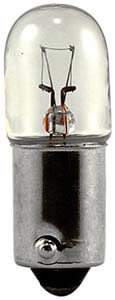
|
Bayonet Cap Base (B) and Socket |
A ″push and pull″ bulb base for low-voltage halogen lamps. |

|
Edison Screw Cap Base (E) and Socket |
A ″screw″ bulb base for large chandeliers and some decorative lighting. |

|
Single Pin Type Base (F) and Socket |
A single ″pin″ bulb base for linear flourescent light bulbs and HID light bulbs. |

|
Bi Pin or Multi Pin Base (G) and Socket |
A ″pin″ bulb base used with halogen, CFL and LED bulbs. |
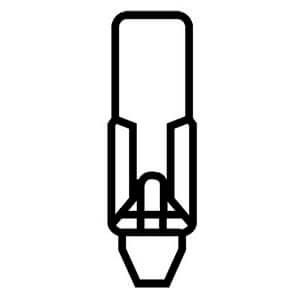 |
Slide Base (S) and Socket |
A penetrative base that slides into place, commonly used in LED pilot light bulbs and industrial indicator lights. |
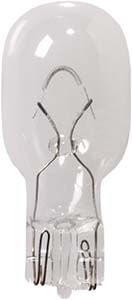
|
Wedge Base (W) and Socket |
A triangular-shaped bulb base, commonly used with LED light bulbs. |
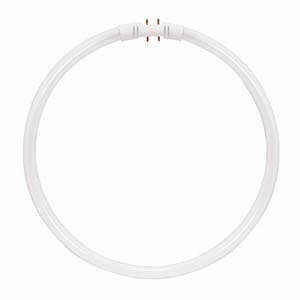
|
Special Type Light Bulb Base (X) and Socket |
A unique, sometimes custom, bulb base meant for distinct lighting purposes. |
| Bayonet Cap Base (B) and Socket |

|
| A ″push and pull″ bulb base for low-voltage halogen lamps. |
| Edison Screw Cap Base (E) and Socket |

|
| A ″screw″ bulb base for large chandeliers and some decorative lighting. |
| Single Pin Type Base (F) and Socket |

|
| A single ″pin″ bulb base for linear fluorescent light bulbs and HID light bulbs. |
| Bi Pin or Multi Pin Base (G) and Socket |

|
| A ″pin″ light bulb base used with halogen, CFL and LED bulbs. |
| Slide Base (S) and Socket |
 |
| A penetrative light bulb base that slides into place, commonly used in LED pilot light bulbs and industrial indicator lights. |
| Wedge Base (W) and Socket |

|
| A triangular-shaped light bulb base, commonly used with LED light bulbs. |
| Special Type Light Bulb Base (X) and Socket |

|
| A unique, sometimes custom, light bulb base meant for distinct lighting purposes. |
Edison Base Sizes
| Name |
Diameter |
Uses |
| E5 Lilliput Edison Screw (LES) or ″Midget″ |
5 mm |
Decorative lights and indicators |
| E10 Miniature Edison Screw (MES) or ″Miniature Screw″ |
10 mm |
Bicycle lights and flashlights |
| E11Mini-Candelabra Edison Screw (mini-can) |
11 mm |
Mini candelabras |
| E12 Candelabra Edison Screw (CES) |
12 mm |
Candelabras, night lamps, and chandeliers |
| E14 Small Edison Screw (SES) |
14 mm |
Chandeliers, night lamps, and pendant lights |
| E17 Intermediate Edison Screw (IES) or ″Intermediate base bulb″ |
17 mm |
Appliances |
| E26 Edison Screw (ES or MES) or ″Medium base bulb″ |
25 mm |
Most commonly used base |
| E27 Edison Screw (ES) or ″European Intermediate″ |
27 mm |
Standard lighting |
| E29 Admedium Edison Screw |
39 mm |
UV spotlight lamps |
| E39 or E40 Goliath Edison Screw (GES) or ″Mogul″ |
40 mm |
Industrial use |
| E5 bulb base |
| Name |
Lilliput Edison Screw (LES) or ″Midget″ |
| Diameter |
5 mm |
| Uses |
Decorative lights and indicators |
| E10 bulb base |
| Name |
Miniature Edison Screw (MES) or ″Miniature Screw″ |
| Diameter |
10 mm |
| Uses |
Bicycle lights and flashlights |
| E11 bulb base |
| Name |
Mini-Candelabra Edison Screw (mini-can) |
| Diameter |
11 mm |
| Uses |
Mini candelabras |
| E12 bulb base |
| Name |
Candelabra Edison Screw (CES) |
| Diameter |
12 mm |
| Uses |
Candelabras, night lamps, and chandeliers |
| E14 bulb base |
| Name |
Small Edison Screw (SES) |
| Diameter |
14 mm |
| Uses |
Chandeliers, night lamps, and pendant lights |
| E17 bulb base |
| Name |
Intermediate Edison Screw (IES) or ″Intermediate base bulb″ |
| Diameter |
17 mm |
| Uses |
Chandeliers, wall sconces, Christmas lights, and other ornamental lights. |
| E26 bulb base |
| Name |
Edison Screw (ES or MES) or ″Medium base bulb″ |
| Diameter |
26 mm |
| Uses |
Most commonly used base in incandescent, LED, and CFL light bulbs. |
| E27 bulb base |
| Name |
Edison Screw (ES) or ″European Intermediate″ |
| Diameter |
27 mm |
| Uses |
Standard lighting such as ceiling lights, lamps, and outdoor spotlights and flood lights. |
| E29 bulb base |
| Name |
Admedium Edison Screw |
| Diameter |
39 mm |
| Uses |
UV spotlight lamps |
| E39 or E40 bulb base |
| Name |
Goliath Edison Screw (GES) or ″Mogul″ |
| Diameter |
40 mm |
| Uses |
Industrial use such as high-bay warehouse lights, parking lot lights, and canopy lights. |
Shop all Bulbs & Lamps
Light Bulb vs Lamp: What's the Difference?
The replaceable part of a light that emits light is called a lamp by professional electricians. The word lamp originated from the Greek word lampas, which means torch.
Because a lamp is a bulb shape, lamps are commonly called light bulbs by the general public. What the lamp fits into, electricians call a fixture (commonly called a
lamp by the general public).
With locations across multiple states, Elliott Electric Supply understands the electrical industry and your
needs, unlike big‑box retailers and e‑commerce corporations. Now, you can access our supplies and services more conveniently using our mobile‑friendly website and through our updated
customer app.
From LED strip lights to outdoor lights, we've got your electrical needs covered. With great pricing, extensive inventory, and fast delivery, you'll find no better wholesale electrical
supplies distributor online than Elliott Electric Supply. Shop online today!
Warning: When using this information to perform electrical work, call a licensed electrician and consult the NEC® for safety. All
licensed electricians have passed examinations covering the National Electric Code®, know state and local building codes, and may carry insurance to cover damages.